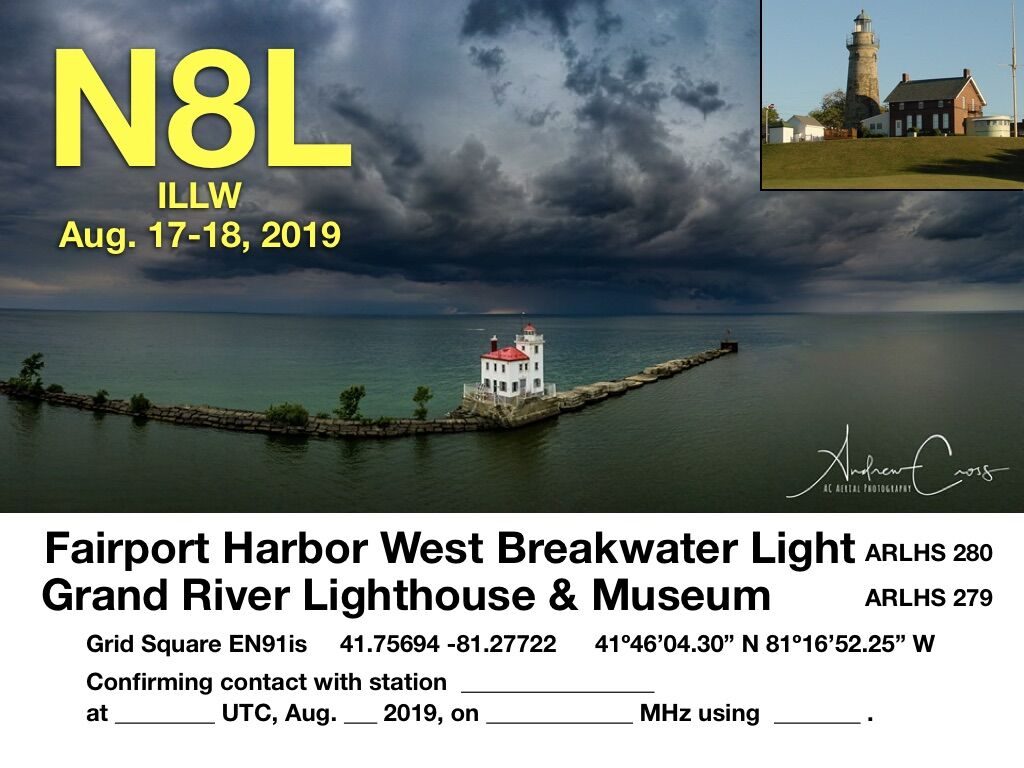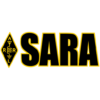The following was written by Dave Spondike N8SAX
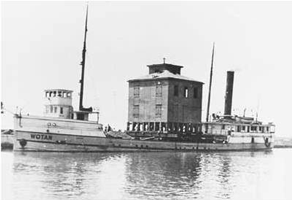
My childhood summers were spent at Headlands Beach, watching the sailboats go out and in past the lighthouse. When I got older, I would walk the “breakwall” as we called it out to the lighthouse, and would dive into the harbor off of the cement base. Many years later I got the privilege to lead a Ham radio expedition out to the breakwater light to activate the lighthouse (US 0188) for the International Lighthouse and Lightship Weekend (ILLW). I had been contacting lighthouses for this event from home for a couple of years, and something made me try to activate the Fairport Harbor Light this year. I contacted the owner, Sheila, who I was surprised to be very open to the idea, and toured the house in early June. A Lake County Ham had expressed an interest, but could not make the trek along the breakwater and Sheila gave me the contact information for the Historical Society, so I contacted them about setting up a secondary site. They, too, were also very open to the idea. I knew that my biggest issues were going to be portaging more than two dozen gallons of gasoline, sixty plus bottles of water, food, and equipment to the light, and learning what I had not anticipated. The next couple of weeks were spent generating interest at club meeting and on the nets. We did get a front page article in the Lake County paper, The Willoughby News Herald. I had two Hams committed to come out, one on Friday (Bryan, KF8G) and one on Saturday (Brooker, KD8JNX). The Lake County Ham went out of town so I had no one to operate from the museum site.
The night before load in, I got a call from Mike KD8TGW saying he wanted to join in, and he was at my house at 5:30 AM the next morning. We left by 6:30 and arrived at Headlands Beach at 7:30, where we met my buddy Jack, who volunteered to haul equipment just so he could see the lighthouse. In our first load, we brought a station (Kenwood TS2000, power supply, mic, key, antennas, feed line, etc.), two backpacks of water, some gasoline, and most of the food. There was still over 20 gallons of gasoline, two more backpacks of water bottles, some food, a 10 meter antenna, and miscellaneous other items back in the car. The harbor side of the breakwater looked relatively calm at the lighthouse, so we decided to leave Mike to open up the windows, fire up the generator, and start unpacking, while Jack and I went back to the car, drove over to the other side of the river, load up my sailboat, and boat lifted the rest of the supplies out to the breakwater. A sailboat was not the best choice, but with a small outboard, we were able to pull up to the platform just north of the lighthouse to unload, and were able to haul the supplies up to the platform by rope. A couple of hours later, Bryan (KF8G) arrived and we met him to carry his equipment and supplies across the breakwater.
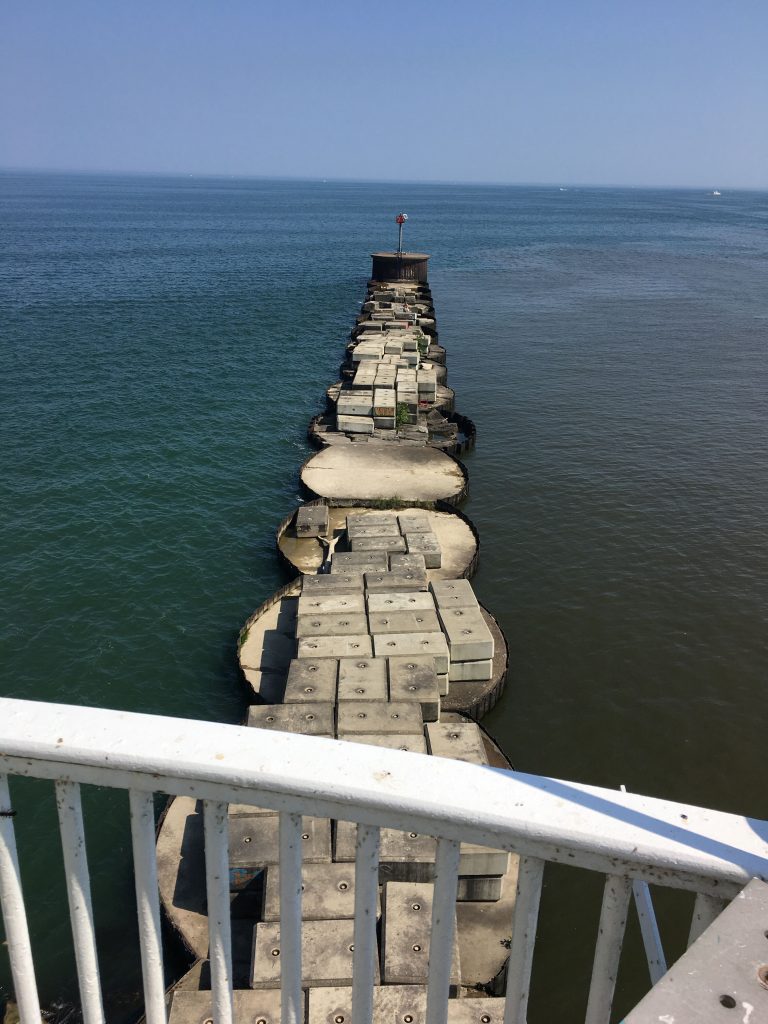
In the mean time, I was contacted by Bob K2THU who was willing to set up a station at the Maritime Museum using the old lighthouse tower. Even though I had sent an e-mail that very morning telling the museum I had no volunteers, things got straightened out and Bob was able to set up a station both Saturday and Sunday. Bryan set up a station on the first floor of the breakwater light and I set up on the second floor. We both set up trapped verticals on the observation deck, hanging the radials over the sides of the building. I also set up a 40 meter end-fed Zepp, hanging that out over the chimney and down the side of the building, almost to the lake. Bryan brought an analyzer so were were able to tune the coils pretty well. Bryan worked 20 meters and I worked 40 and 80. I was able to make four contacts the first evening starting a 8 PM local time on Friday the 16th. 20 meters was already closed though Bryan gave it a good try. Nobody had the energy to fire up the grill, but fortunately my mom had made dozens of sliders, ham, bologna, salami, roast beef. Bryan, Mike, and I spent the first night at the lighthouse, shutting down the generator at about 10 PM.
Saturday we had three stations operating, two from the breakwater light and one from the museum. Brooker crossed the breakwater in the morning to join us for the day. Bryan was able to make 19 contacts on 20 meters, fighting through the contest that jammed up the band. Meanwhile Brooker and I made a dozen contacts on the lower bands. We were able to make contact with a half dozen Summit County Hams, mostly on 80 meters. Jim WB8VMW and I tried to make a CW contact, but the propagation just was not there. Bob and Duane K4LNN were able to make a dozen contacts from the museum site. During the day, we had a half a dozen visitors. Everyone being too tired and too sore to volunteer to be the grill master, we dug into the sliders. Starting at about 5 PM or so, one by one, Brooker, Mike, and Bryan left the light and crossed the breakwater back to the mainland. The wind had picked up out of the west and the waves were crashing over the breakwater. Each made it back safely, but said it was a wet journey. It was just me and the light… and the tug boat dragging a barge back and forth, out to the lake full of silt and back down the river to fetch some more.
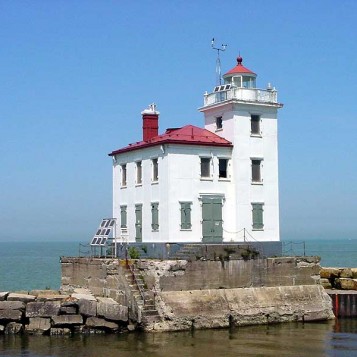
I closed the west and south windows on the first floor, grabbed a couple of sliders and an iced tea, went upstairs and made the last few contacts of the evening. I browsed a couple of the Fairport Harbor history books and Lighthouse books before turning off the generator and going to bed. In the middle of the night, the expected storm did wake me. The wind was strong enough to blow the rain straight across the room. The waves on the west side of the breakwater were churning at about seven feet and crashing across even the widest parts of the breakwater. The lightning lit the sky but there was nothing to see, just a grey fog of clouds and rain that glowed when the lightning flashed. I felt very fortunate to have the opportunity to feel maybe a little bit of what a lighthouse keeper might have felt when that was more or less common profession.
The next morning the weather had cleared. After getting some coffee I got started and made another 40 contacts throughout the day on Sunday while Bob made another 15 contacts from the museum site on the mainland. The weather remained clear, but the winds jumped up to 38 MPH during the day. Thunderstorms passed by just a mile or two, to the north and to the south simultaneously. By the end of the contest the noise levels were a steady S-7 with static crashes over S-9, so I closed down the station about an hour early, around 7 PM and broke down all of the antennas and equipment before dark. Just as I was nearly finished I heard a shout. My good friend and volunteer porter, Jack crossed the breakwater at sunset to spend the night and help off load in the morning.
Jack and I enjoyed some of the views and an evening of conversation before shutting down the generator for the night. Another storm rolled through overnight and fortunately cleared out by morning. There were two of us. Four antennas, a couple of 100’ rolls of coax, radio, power supply, peripherals, 10 empty gas cans and 4 full 2-gallon cans. I had already decided to leave any unused supplies for the owner. They were not perishable. She could use them and I did not want to carry them back. Fortunately, a high school buddy brought his Boston Whaler out to visit me on Sunday, a nice break to being alone. He offered to consider returning on Monday morning, and he did, bringing a friend. The breakwater kept the waves down to a minimum on the east side. We quickly loaded the equipment and gas cans onto the Whaler, and were able to boat lift off without making multiple treks across the break water. A huge relief to both Jack and me.
An aerial photographer gave me permission to use is work for the QSL card and that is the the remaining task, to collect and respond to as many QSLs as possible. I will be collecting cards from all of the lighthouses we contacted to put into an album or a frame as a gift to Sheila and the West Breakwater Light, and I will be sending copies of the log to all involved. All-in-all, I have to say it was a successful weekend, making 97 contacts including a dozen lighthouses. It was a lot of work, but well worth the effort. This is what I heard from each person who made it out to the light. For me, the best part of the weekend was their thrill and excitement being in that place. That is what made it so much worth the effort.
